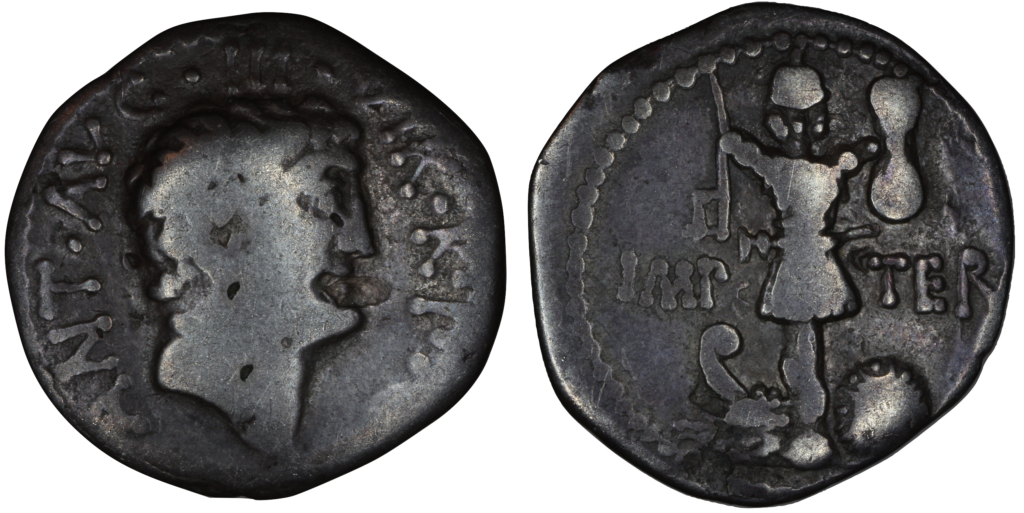
The inscription sets out Mark Antony’s position pretty clearly – Antonius augur, triumvir rei publicae constituendae: Antony the priest, one of the three men for sorting out the Republic. His obverse portrait approaches Roman verism in style through its emphasis of non-classically ideal elements. It does this in a clear but not an unbelievable manner.
Antony has a protruding chin, and a large, almost hooked nose. In other coin issues he would include such depictions alongside a similarly treated Cleopatra. In so doing, he looks quite distant from the typical Hellenistic king; the idiom is an emphatically Roman one, and outlines how Antony is an upstanding Roman citizen, here to restore the old Republic – not the powerful general ambitious for sole-rule who is carrying on with a foreign queen…
Any similarities with contemporary coins issued by rulers in the Greek East would have been unfortunate, but these rulers were trying to communicate in a Roman idiom anyway, which Antony is likely to have hoped the domestic audience would have perceived. Antony’s coin portraits are designed for this mass consumption and show him in an insistently Roman style, and in a look that smacks of upstanding old-style citizens. His portraits in marble communicate in a different visual language and present a more classically beautiful and youthful man.
Both portrait styles were a little distance from the real man, since at the time this coin was issued Antony was a bit old for the Classical ideal (being in his mid-forties), but also not yet old enough to pull of the wizened elder statesman routine. The imagery of the coin then is a typically pragmatic compromise.
The reverse proudly speaks of Antony as imperator tertio – that his troops had acclaimed him for a third time, after news of the victory at the Battle of Mount Gindarus had reached Antony at Athens in 38. It also gives a scatter-gun depiction of Antony’s formidableness in military matters. A prow points to naval prowess, while a tropaion signifies a signal victory. A tropaion is an arrangement of the arms and armour of a defeated enemy set up in a slightly eerie hollow arrangement. The figure-of-eight shield and curved sword reassure us that the victory was against foreign persons with strange, exotic and probably dangerous ways – and by contrast emphasise Antony’s orthodox Romanitas.
